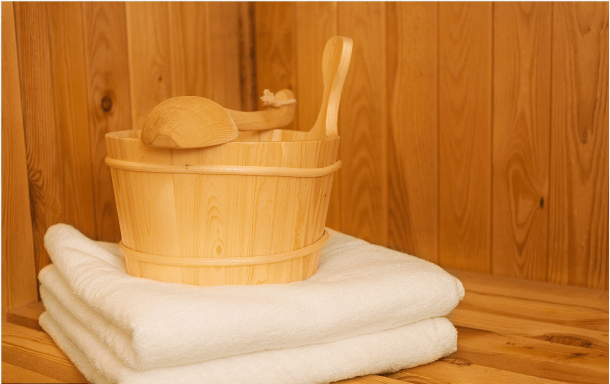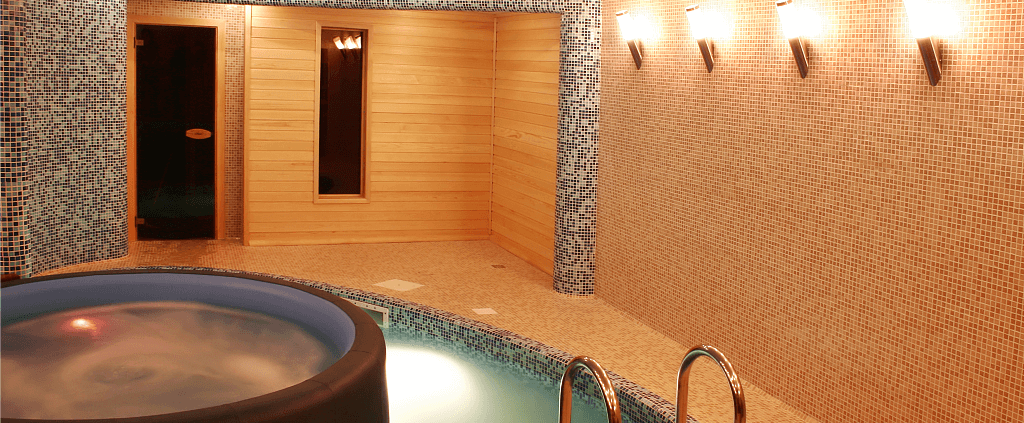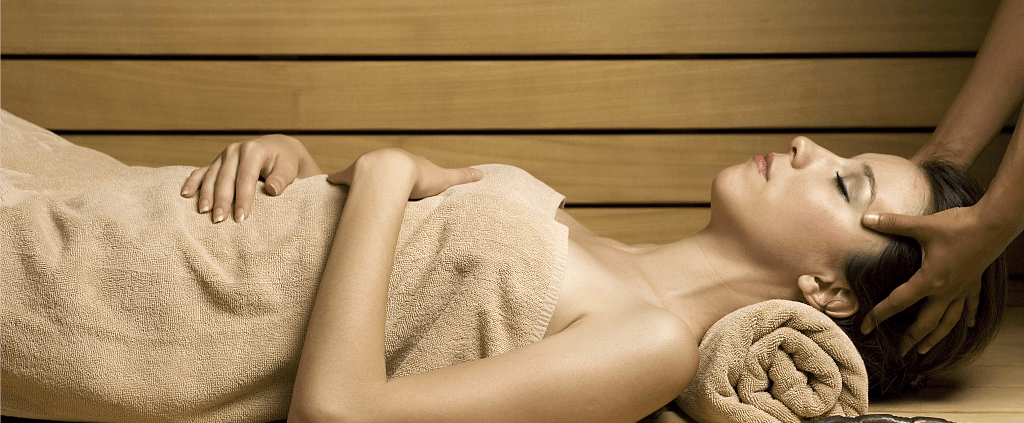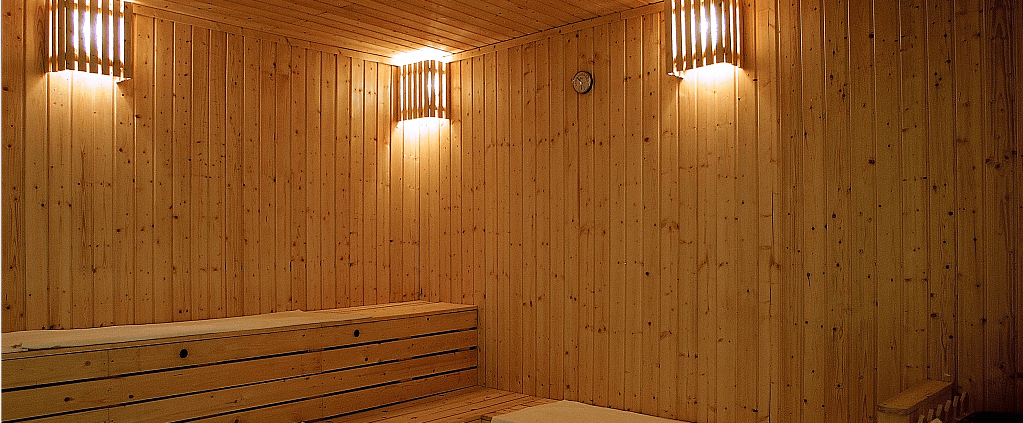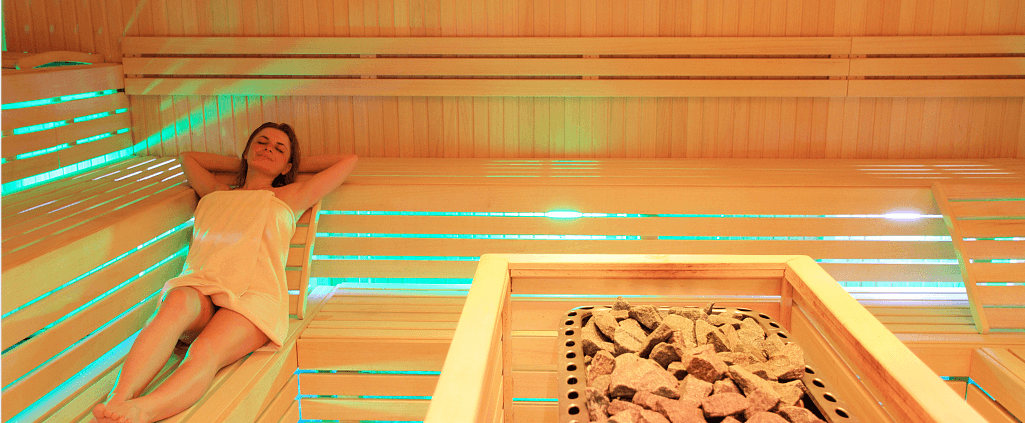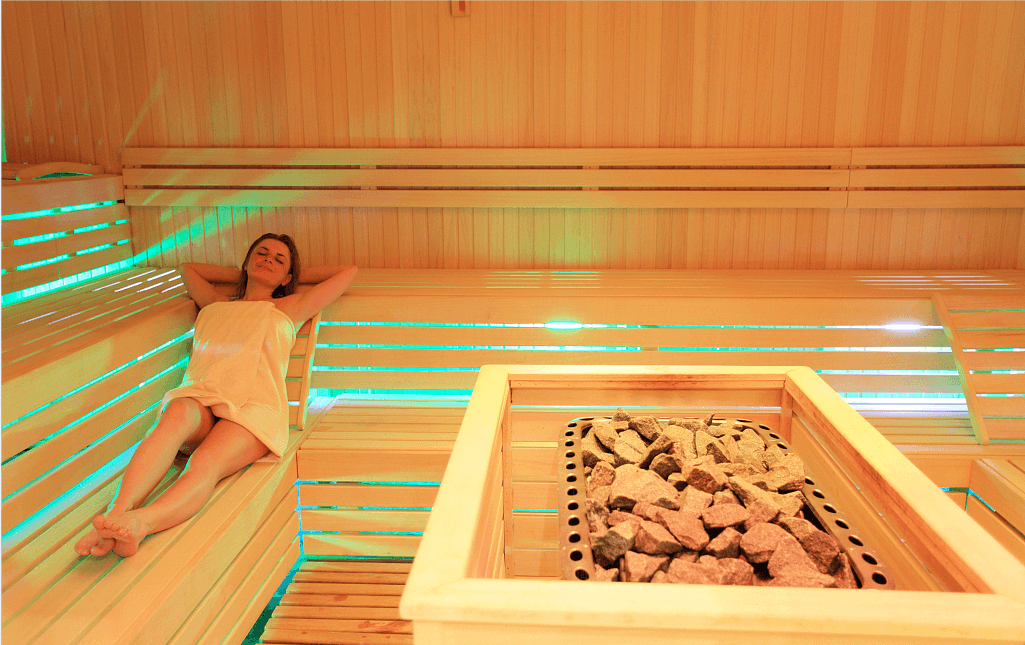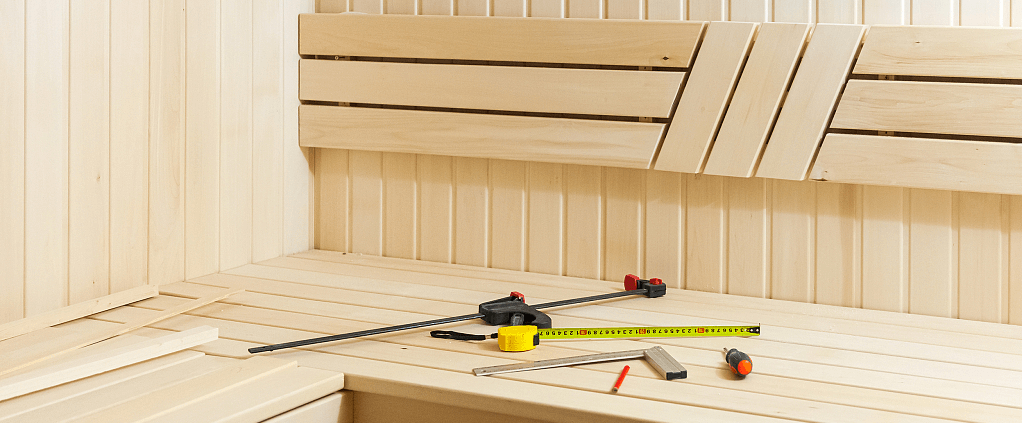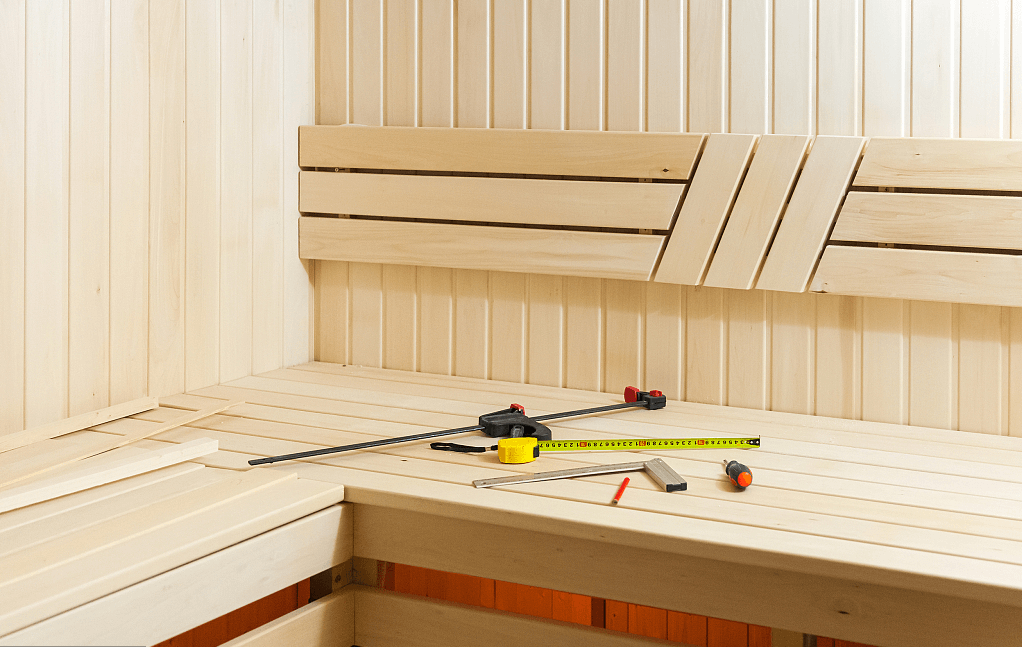Introduction
Definition of Turkish Hamam
A Turkish hamam, also known as a Turkish bath, is a type of steam bath that originated in Turkey and has been a traditional part of Turkish culture for centuries. It is a place where people go to cleanse and relax, and it is often a social gathering place as well. Turkish hamams typically consist of a series of rooms, including a hot room, a warm room, and a cool room, as well as a central area where visitors can relax and socialize.
The design of a Turkish hamam is typically characterized by a large, central dome-shaped room with smaller, interconnected rooms branching off from it. The rooms are usually adorned with ornate tilework and marble, and the floors are often heated to keep visitors warm and comfortable. In addition to the steam rooms, most Turkish hamams also include a separate area for massages and other spa treatments.
History of Steam Bathing
The practice of steam bathing has been around for thousands of years, and it has been a part of many different cultures throughout history. The ancient Greeks and Romans, for example, used steam baths as a way to cleanse the body and promote good health. In Japan, the traditional practice of onsen, or hot springs bathing, has been a part of Japanese culture for centuries. Native American tribes also used steam baths for healing and purification.
In Turkey, the practice of steam bathing can be traced back to the time of the ancient Romans, who brought the concept of public baths to the region during their rule. Over time, the Turkish people adapted the Roman baths to suit their own cultural preferences, and the Turkish hamam was born.
Benefits of Turkish Hamam
The Turkish hamam offers a range of health benefits, both physical and mental. The heat and steam of the hamam help to open up the pores and release toxins from the body, leaving visitors feeling refreshed and revitalized. The heat also helps to increase circulation and stimulate the immune system, which can improve overall health and well-being.
In addition to the physical benefits, the Turkish hamam is also a place of relaxation and socialization. Visitors can spend hours in the hamam, relaxing and chatting with friends, or they can opt for a massage or other spa treatment to further enhance their experience.
In other words, the Turkish hamam is a unique and special experience that offers a range of health benefits and has been a part of Turkish culture for centuries. From its ancient origins to its modern-day adaptations, the Turkish hamam remains an important part of Turkish life and a symbol of the country’s rich cultural heritage. Whether you’re a visitor to Turkey or a local resident, a visit to a Turkish hamam is a must-do experience that is sure to leave you feeling rejuvenated and refreshed.
Brief history of the Turkish Hamam
The history of the Turkish Hamam can be traced back to the Roman Empire, where bathing was considered an essential part of daily life. The practice of bathing then spread to the Byzantine Empire and the Islamic world, where it became an important part of Islamic culture. The Turkish Hamam evolved from these earlier traditions and became an integral part of Turkish culture.
The first Turkish Hamams were built during the Seljuk period in the 11th century. These early Hamams were built for the use of the Sultan and the elite, and were typically constructed with marble and intricate tile work. They were considered a symbol of wealth and power, and were often built adjacent to mosques and other important buildings.
Over time, the Turkish Hamam became more widely accessible to the public, and many were built in neighborhoods throughout Turkey. These public Hamams were an important gathering place for the community, and were a place where people could come to socialize, relax, and cleanse their bodies. Today, the Turkish Hamam continues to be an important part of Turkish culture, and is considered a must-visit experience for tourists visiting Turkey.
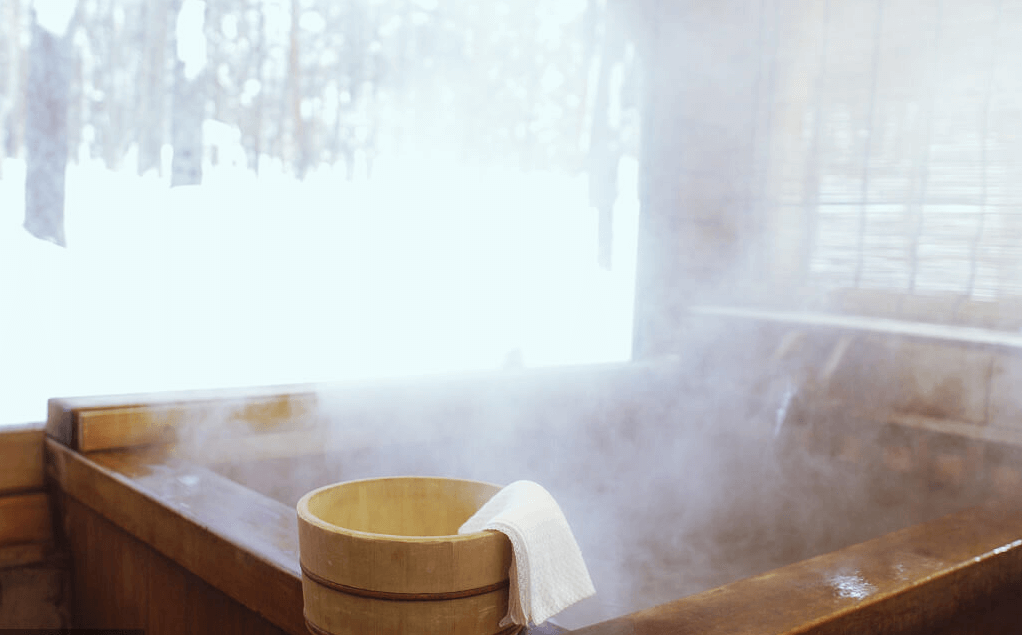
Overview of the importance of steam bathing across cultures and history
Steam bathing has been an important part of various cultures throughout history. In ancient Rome, public baths were a vital part of daily life, and were used not only for hygiene but also for socializing, relaxing, and conducting business. The Roman baths were often equipped with saunas and steam rooms, which were used for sweating and detoxification.
In ancient Greece, the practice of steam bathing was also popular, with bathhouses known as “thermae” being built throughout the country. The Greek baths were designed with a series of rooms that were heated to different temperatures, and were often used for medical purposes, such as treating rheumatism and respiratory conditions.
In traditional Japanese culture, the practice of steam bathing is known as “ofuro,” and is an important part of daily life. Japanese hot springs, or “onsen,” are natural baths that are fed by geothermal springs, and are considered to have healing properties due to their high mineral content. The Japanese also have a tradition of taking a steam bath in a small, wooden room known as a “sento,” which is used for relaxation and detoxification.
In Islamic culture, the practice of steam bathing is known as “hammam,” and is an important part of daily life in many Middle Eastern countries. The hammam is similar to the Turkish Hamam, and is often used for cleansing the body and socializing with friends and family.
The use of steam for therapeutic purposes is also a common practice in many traditional medicine systems, such as Ayurveda and Traditional Chinese Medicine. In Ayurvedic medicine, steam baths are used to eliminate toxins and improve circulation, while in Traditional Chinese Medicine, steam baths are believed to strengthen the immune system and promote overall health.
Overall, the importance of steam bathing across cultures and history can be attributed to its various physical and mental health benefits, as well as its social and cultural significance. The use of steam for detoxification, relaxation, and socialization has been a common practice throughout human history, and continues to be a popular activity today.
Regenerate response
The History of Steam Bathing
Ancient origins of steam bathing
Steam bathing has ancient origins and has been used in many cultures for thousands of years. The ancient Greeks and Romans used steam baths as a way to relax and cleanse the body. The Romans called their steam baths “thermae” and built elaborate bathhouses that included pools, saunas, and steam rooms. In Japan, the traditional bathhouse called the “onsen” uses natural hot springs as a source of steam and is an important part of Japanese culture.
In India, the ancient practice of Ayurveda promotes the use of steam baths as a way to detoxify the body and improve overall health. The ancient Mayans and Aztecs also had steam baths, known as “temazcal,” which were used for spiritual and physical purification.
Across cultures, steam bathing was believed to have many benefits beyond relaxation, including improving circulation, purifying the body, and treating respiratory problems. In many cases, steam bathing was also a social activity, with people coming together to chat and relax in the steam room.
Development of the steam bath in different cultures
Over time, the steam bath developed in different ways across cultures. In Turkey, for example, the steam bath evolved into the Turkish hamam, which has become a hallmark of Turkish culture.
In the Turkish hamam, the steam is generated in a central chamber, which is heated by a furnace. The steam then rises through a series of chambers of decreasing temperature, allowing users to gradually acclimate to the heat. Users typically start by lounging on a heated platform in the warmest chamber, known as the “caldarium,” and then move to the “tepidarium” and “frigidarium,” where the temperature is cooler. In the final chamber, users can receive a massage or body scrub from an attendant.
The Turkish hamam was not just a place to bathe, but also a social hub where people could relax and socialize with friends. The hamam also played a role in Turkish culture as a place where important events, such as weddings and births, were celebrated.
In Russia, the steam bath evolved into the “banya,” which was traditionally a wooden structure heated by a wood-burning stove. The banya was also a social space, where friends and family would gather to relax and chat. In Finland, the traditional steam bath is called the “sauna,” and it is also a social space where people come together to relax and socialize.
While the specifics of the steam bath may vary across cultures, the practice of using steam to relax and cleanse the body has remained a constant throughout history.
Commonalities between different cultures’ steam bath practices
Despite the differences in the specific techniques and customs surrounding steam bathing across various cultures, there are several commonalities that can be observed.
Firstly, the use of steam baths for relaxation, purification, and healing can be found in many ancient cultures. From the Greeks and Romans to the ancient Chinese and Japanese, steam baths were viewed as a form of therapy for a variety of ailments.
Another commonality is the emphasis on communal bathing. In many cultures, steam baths were used as a social gathering place where people could come together, relax, and engage in conversation. It was a place where people of all ages and genders could bathe together, breaking down social barriers and promoting community.
Many cultures also incorporated various natural elements into their steam baths, such as herbs, essential oils, and minerals. These elements were believed to have therapeutic properties, and could help to enhance the overall experience of the steam bath.
Finally, there is a shared belief across cultures that steam baths have significant health benefits, such as detoxification, improved circulation, and relief from respiratory and skin conditions. While the specific benefits attributed to steam baths may vary from culture to culture, the overall belief in the healing properties of steam bathing is a shared belief.
The role of steam bathing in health and wellness throughout history
Steam bathing has been used for centuries as a means of promoting health and wellness. Across different cultures and time periods, steam baths have been associated with a variety of health benefits, including relaxation, detoxification, pain relief, and improved respiratory function.
In ancient Greece and Rome, steam baths were an important part of daily life. The Greeks had the “laconica,” a dry steam bath that was used to promote perspiration and detoxification. The Romans had the “thermae,” which were public bathhouses with hot and cold rooms, steam rooms, and pools.
In traditional Ayurvedic medicine in India, steam baths have long been used for detoxification and relaxation. The practice is known as “swedana,” and it is used as a way of promoting the release of toxins through sweating.
In Native American cultures, sweat lodges were used for spiritual and physical cleansing. These structures were typically made of natural materials and heated with hot stones to create a humid environment for participants.
In China, steam baths were part of traditional medicine and were used for a variety of health purposes, including relieving pain, improving circulation, and promoting relaxation. The practice is still used today in traditional Chinese medicine.
In modern times, steam baths are used in a variety of health and wellness contexts. In spas and wellness centers, steam baths are often used for relaxation and stress relief. In sports medicine, steam baths are used to promote recovery and reduce muscle soreness. Steam baths are also commonly used in saunas and other heat therapy practices.
The health benefits of steam baths are thought to be due to a combination of factors, including the heat, humidity, and the activation of the body’s natural sweat response. When the body sweats, it releases toxins and excess water, which can help to cleanse the body and promote overall health.
Steam baths are also thought to have a positive effect on the respiratory system. The moist, warm air can help to soothe irritated airways and promote healthy breathing. In addition, the relaxation and stress relief that come with steam bathing can have a positive impact on mental health.
Overall, the use of steam baths for health and wellness has a long and diverse history across different cultures. Whether used for detoxification, relaxation, pain relief, or other purposes, steam baths continue to be a popular and effective way of promoting health and well-being.
The Turkish Hamam
The emergence of the Turkish Hamam
The Turkish Hamam as we know it today evolved from a combination of the Roman thermae and the Central Asian bathing traditions of the Seljuk Turks. The Turkish Hamam was an important social hub in Ottoman culture, where people of all backgrounds and classes would come to relax and socialize.
The design of the Turkish Hamam typically consists of a series of rooms with varying levels of heat and humidity. The first room, or hararet, is a warm room with a large heated marble platform, or göbek taşı, in the center. This room is designed to allow bathers to acclimate to the heat and begin to sweat. The second room, or sogukluk, is a cooler room with benches and a fountain for refreshment. The final room, or hot room, is the most humid and hottest, and it is here where the actual bathing takes place.
In addition to the design of the Hamam itself, the bathing process in the Turkish Hamam is also unique. Rather than simply soaking in water, as in the Roman thermae, the Turkish Hamam involves a series of cleansing and exfoliation rituals. Bathers are scrubbed down with a coarse mitt, or kese, to remove dead skin, and then soaped and rinsed. This process leaves the skin soft and smooth, and the steam helps to open up the pores, allowing for a deeper cleanse.
The Turkish Hamam became an important part of Ottoman social life, with separate Hamams for men and women, as well as public and private Hamams. It was not just a place for bathing, but also a center for socializing and relaxation. In fact, many important political and business deals were made in the Hamam, as it was a place where people of all backgrounds and classes could come together.
Today, the Turkish Hamam continues to be an important part of Turkish culture, although its popularity has declined somewhat in recent years. Many Hamams have been renovated and modernized, but there are still some traditional Hamams that have been in operation for hundreds of years. The Turkish Hamam remains an important part of the country’s cultural heritage and a symbol of the importance of relaxation and socialization in Turkish life.
The architecture and design of the Turkish Hamam
The design of the Turkish Hamam is a reflection of the cultural and social importance of communal bathing in Turkey. The Hamam consists of three main parts: the entrance, the dressing room, and the steam room.
The entrance to the Hamam, also known as the Camekan, is a transition space between the outside world and the private, ritualistic space of the Hamam. It typically includes a small courtyard with a fountain or pool to allow for cleansing and a transition to a state of relaxation before entering the Hamam proper. This space is also where visitors remove their shoes before entering the dressing room.
The dressing room, also known as the Soyunmalik, is the space where visitors prepare for the steam room experience. The Soyunmalik is a large room where visitors change into the traditional Hamam garment, the Pestemal, which is a simple cotton wrap that covers the body from waist to knee. Visitors leave their personal belongings in a locker and then proceed to the steam room.
The steam room, also known as the Hararet, is the centerpiece of the Hamam experience. It is a large, domed room made of marble or stone with a heated platform, known as the Gobek Tasi, in the center. The Gobek Tasi is where visitors lie down to relax and enjoy the steam, which is produced by pouring water over hot stones. The steam is infused with the scent of soap, which is applied to the visitor’s body and then rinsed off with warm water.
The architecture of the Turkish Hamam is characterized by intricate tile work, high ceilings, and domed roofs. The marble and stone used in the construction of the Hamam not only add to its aesthetic appeal but also serve a practical purpose by retaining the heat and moisture generated by the steam. The result is a warm, humid environment that is both relaxing and rejuvenating.
The Hamam has been an integral part of Turkish culture for centuries and remains a popular destination for tourists and locals alike. In addition to its cultural and social significance, the Hamam is also valued for its therapeutic benefits. The heat and steam can help to alleviate a variety of ailments, from respiratory issues to muscle pain and fatigue. In many ways, the Turkish Hamam embodies the very essence of wellness and serves as a testament to the enduring importance of communal bathing practices.
The role of the Turkish Hamam in Turkish culture and society
The Turkish Hamam has played a significant role in Turkish culture and society throughout history. The hamam was not only a place for bathing, but also served as a social hub where people from all walks of life could come together to relax and socialize.
In traditional Turkish culture, visiting the hamam was a weekly ritual. It was a place where people could escape from the stresses of daily life and indulge in the luxurious and therapeutic experience of steam bathing. The hamam was also a place where people could bond over shared experiences, and it was not uncommon for business deals to be made in the hamam.
The Turkish Hamam was also an important space for women, who were not permitted to socialize freely in public. The women’s section of the hamam, known as the “göbek taşı” (belly stone), provided a safe space for women to gather, socialize, and enjoy the benefits of steam bathing. Women would often bring their young daughters to the hamam to teach them about the importance of self-care and to pass down cultural traditions from one generation to the next.
The Turkish Hamam has also played a significant role in the development of Turkish art and architecture. Many of the most beautiful and historic hamams in Turkey were built during the Ottoman period, and they are renowned for their intricate tile work, marble columns, and domed ceilings.
Today, the Turkish Hamam continues to be a beloved cultural institution in Turkey and around the world. While modern spa facilities have taken some of the focus away from traditional hamams, many people still seek out the authentic experience of a traditional Turkish Hamam. It remains a place where people can come together to relax, socialize, and connect with their cultural heritage.
The various stages of the Turkish Hamam experience
The Turkish Hamam experience typically consists of several stages, each with its own unique purpose and benefits. These stages may vary depending on the specific Hamam and its traditions, but they generally follow a similar pattern. Here are some of the common stages of the Turkish Hamam experience:
Changing room: The first stage of the Turkish Hamam experience is the changing room, where visitors undress and put on a peshtemal, a traditional Turkish towel that is used throughout the Hamam.
Warm-up: The warm-up stage typically involves spending time in a warm, humid room known as the camekan. This room is designed to gradually raise the body’s temperature and induce sweating.
Exfoliation: After the warm-up stage, visitors move to the hararet, the hot room of the Hamam. Here, a professional masseur known as a tellak exfoliates the skin using a kese, a rough cloth glove that removes dead skin cells and opens the pores.
Soap massage: Following the exfoliation, visitors receive a soap massage, which involves being lathered up with soap and then massaged by the tellak. This stage can be particularly relaxing and therapeutic, as the tellak uses long, flowing strokes to ease tension and promote relaxation.
Cold water rinse: The soap massage is followed by a cold water rinse, which helps to close the pores and refresh the skin.
Relaxation: The final stage of the Turkish Hamam experience is relaxation. Visitors may spend time in a cool room or outdoor area, where they can rest and enjoy refreshments such as Turkish tea or fruit.
Overall, the Turkish Hamam experience is designed to promote physical and mental wellness through the therapeutic benefits of heat, steam, and massage. The various stages of the experience work together to provide a full-body cleansing and rejuvenation that can leave visitors feeling refreshed, relaxed, and revitalized.
Health Benefits of the Turkish Hamam
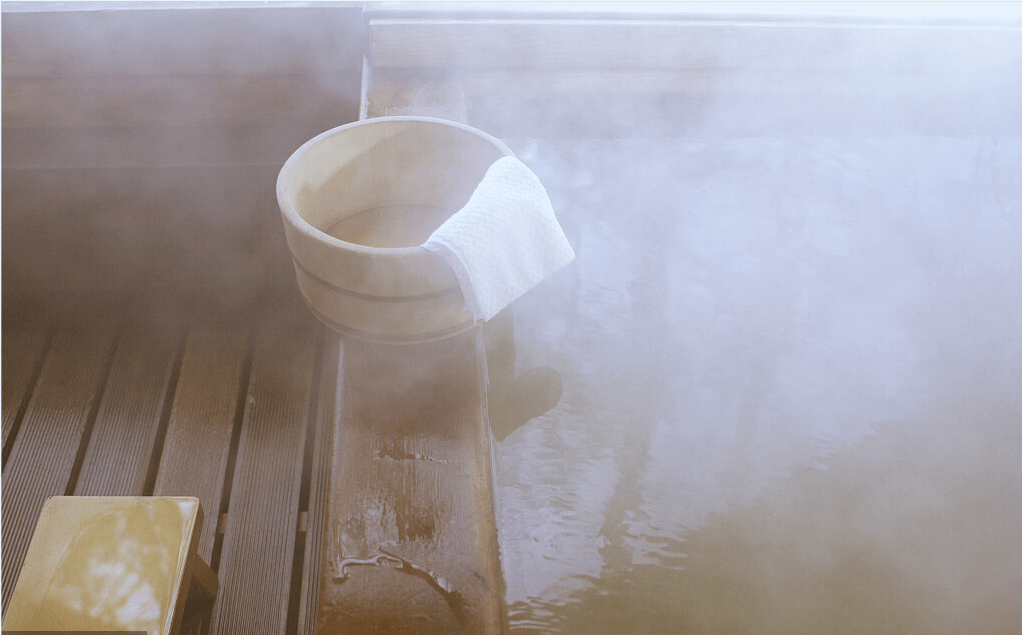
Physical health benefits
The Turkish Hamam provides a range of physical health benefits. The heat and humidity of the steam room can help to improve circulation and open up the airways, making it easier to breathe. This can be particularly helpful for people with respiratory problems, such as asthma or bronchitis. The steam also helps to soothe sore muscles and joints, which is beneficial for people with arthritis or other conditions that cause pain and inflammation.
In addition to the steam room, the Turkish Hamam often includes a cold plunge pool or shower, which helps to stimulate blood flow and reduce inflammation. The contrast between the hot steam room and the cold plunge pool or shower can also be invigorating and help to boost the immune system.
The Turkish Hamam also typically includes a massage or scrub, which helps to remove dead skin cells and improve circulation. This can help to reduce the appearance of cellulite and improve the skin’s texture and tone.
In addition to these physical health benefits, the Turkish Hamam can also provide mental health benefits. The relaxation and stress relief provided by the steam room and massage can help to improve mood and reduce feelings of anxiety and depression. The Turkish Hamam can be a place of calm and tranquility in a busy and stressful world.
Mental health benefits
The Turkish Hamam offers not only physical health benefits but also mental health benefits. For many people, the Hamam is a place to unwind, relax, and de-stress. The calming atmosphere of the Hamam, with its soft lighting, gentle music, and aromatic scents, can be a powerful tool in reducing anxiety and promoting a sense of well-being. The heat of the steam room can help to release endorphins, which are the body’s natural mood boosters, leading to a feeling of euphoria and a sense of emotional release.
The act of cleansing in the Hamam can also have a positive psychological impact. For many people, the process of being washed by another person can be a humbling and meditative experience. The traditional Hamam ritual involves a series of physical and spiritual cleansing practices, including the use of black soap, which is believed to have therapeutic properties, and the use of a kese, a rough mitt used for exfoliating the skin. These practices are not only beneficial for the body but also for the mind, as they provide an opportunity for introspection and self-reflection.
The Hamam also offers a social space for people to come together and connect with others. It is a place where people of all ages, genders, and social backgrounds can come together and share a communal experience. This can be a powerful tool in combatting loneliness and social isolation, which are major contributors to poor mental health.
In summary, the Turkish Hamam offers a holistic experience that promotes both physical and mental well-being. Its combination of steam, water, and touch can have a powerful therapeutic effect on the body and mind, helping to reduce stress, alleviate anxiety, and promote a sense of relaxation and well-being.
Comparison with other types of steam baths
Compared to other types of steam baths, the Turkish Hamam offers a unique experience that combines socializing with relaxation and cleansing. While the Finnish sauna and the Russian banya are more focused on intense heat and steam, the Turkish Hamam is characterized by a gentler heat and a more holistic approach to well-being.
The Moroccan hammam, for example, shares some similarities with the Turkish Hamam in terms of architecture and ritual, but it tends to be more focused on cleansing and beauty treatments, rather than relaxation and socializing. Similarly, the Japanese onsen and sento are more focused on the therapeutic benefits of hot water, rather than steam, and tend to be more solitary experiences.
Another key difference between the Turkish Hamam and other types of steam baths is the focus on cleanliness and hygiene. In the Turkish Hamam, cleanliness is considered a key element of the overall experience, and the rituals are designed to help individuals cleanse both their bodies and their minds. This is in contrast to some other cultures, where sweating is seen as a natural and healthy process that does not necessarily require frequent washing.
Overall, while the Turkish Hamam shares some similarities with other types of steam baths, it offers a unique experience that combines relaxation, socializing, and cleansing in a way that is deeply rooted in Turkish culture and history.
Scientific evidence supporting the benefits of steam bathing
There is a growing body of scientific research that supports the health benefits of steam bathing, including the use of Turkish Hamams. Here are some examples:
Respiratory health: A study published in the International Journal of Chronic Obstructive Pulmonary Disease found that steam inhalation can improve lung function and reduce symptoms in people with chronic obstructive pulmonary disease (COPD).
Cardiovascular health: A study published in the Journal of the American College of Cardiology found that sauna bathing is associated with a reduced risk of cardiovascular disease and all-cause mortality.
Pain relief: A study published in the Journal of Pain Research found that heat therapy, including steam baths, can provide pain relief for people with various types of chronic pain.
Skin health: A study published in the Journal of Investigative Dermatology found that regular sauna use is associated with improved skin health, including increased skin elasticity and reduced incidence of wrinkles.
Mental health: A study published in the Journal of Physiological Anthropology found that sauna use is associated with a reduction in symptoms of depression and anxiety.
Immune system support: A study published in the International Journal of Hyperthermia found that heat therapy, including sauna use, can help support the immune system and increase white blood cell count.
It is important to note that while these studies suggest potential health benefits of steam bathing, more research is needed to fully understand the mechanisms and effectiveness of these therapies. Additionally, people with certain health conditions, such as cardiovascular disease or pregnancy, should consult with their healthcare provider before using a Turkish Hamam or engaging in any heat therapy.
The Turkish Hamam Experience
Preparing for the Turkish Hamam
Before visiting a Turkish Hamam, it is important to know what to expect and how to prepare. Here are some tips to help you prepare for your Turkish Hamam experience:
Choose the right time: It is recommended to visit the Turkish Hamam in the morning, as it is typically less crowded than in the afternoon or evening. This can allow for a more relaxed and personalized experience.
Dress appropriately: The traditional attire for a Turkish Hamam is a pestemal, which is a thin cotton or linen towel that wraps around the body. You may also want to bring a swimsuit for added modesty. It is recommended to leave jewelry and other valuables at home, as they may be lost or damaged in the Hamam.
Hydrate: Drinking plenty of water before and after your Hamam session can help prevent dehydration and ensure that your body is properly hydrated.
Avoid heavy meals: It is best to avoid heavy meals before your Hamam session, as it can lead to discomfort during the bathing experience.
Use the restroom: It is recommended to use the restroom before entering the Hamam, as it is not appropriate to use the facilities inside.
Be open to the experience: The Turkish Hamam is a unique and traditional experience that may be different from what you are used to. Approach the experience with an open mind and be willing to embrace the cultural differences.
The Turkish Hamam ritual and process
The Turkish Hamam is a unique and time-honored experience that has been enjoyed for centuries. The ritual and process of the Hamam is designed to provide relaxation, cleansing, and rejuvenation for the body and mind. Here is a brief overview of the Turkish Hamam ritual and process:
Arrival: Upon arrival at the Hamam, guests are provided with a towel, soap, and wooden clogs, called takunya. After undressing and wrapping themselves in the towel, guests proceed to the Hamam’s warm room, called the sıcaklık.
Warm-up: In the sıcaklık, guests relax and warm up in the heat, which is usually around 40-50 degrees Celsius. The warm-up period can last anywhere from 10 to 20 minutes.
Body Scrub: After warming up, guests are led to the kurna, a large, heated marble slab. Here, a therapist will use a kese, a special exfoliating glove, to scrub and remove dead skin from the entire body.
Soap Massage: Following the body scrub, guests are lathered in soap, which is made from natural ingredients such as olive oil, and then given a massage. The soap massage can be done on the kurna or in a separate room, depending on the Hamam.
Rinse: After the soap massage, guests are rinsed with hot water and then cold water to close the pores.
Relaxation: After the Hamam ritual is complete, guests can relax in the Hamam’s cooling room, called the soğukluk. Here, they can enjoy a cup of tea or water and take in the serene atmosphere.
It’s important to note that the Hamam ritual and process can vary depending on the Hamam and the region of Turkey. However, the basic steps outlined above are generally followed in most Hamams.
The Hamam ritual is not just a physical experience, but also a mental and emotional one. The process of cleansing and relaxing in the warm and peaceful environment of the Hamam can be a meditative and calming experience, promoting mental wellness and reducing stress.
Overall, the Turkish Hamam ritual and process is an important part of Turkish culture and society, providing a unique and beneficial experience for both locals and visitors alike.
Cultural norms and expectations
The Turkish Hamam has a long and rich history, and as a cultural institution, it has its own set of norms and expectations. Understanding these cultural expectations can help you have a more authentic and enjoyable experience.
One of the most important cultural norms to understand is the separation of men and women in the Hamam. In traditional Turkish culture, men and women bathe separately, and this practice is still common in many Hamams today. If you are visiting a Hamam, make sure to check whether it is a mixed-gender or single-gender facility, and respect the rules and customs accordingly.
Another important aspect of Hamam culture is modesty. While bathing, it is customary to wear a pestemal, a traditional Turkish towel, or a swimsuit. In mixed-gender facilities, women may also wear a towel or robe. Most Hamams also provide disposable underwear or pestemals, so it is important to ask about these options when you arrive.
When you enter the Hamam, you will be greeted by the attendants, who will guide you through the bathing ritual. It is customary to tip the attendants, who work hard to make sure you have a comfortable and enjoyable experience.
During the bathing process, it is important to be respectful of others and maintain a peaceful and quiet atmosphere. Many people come to the Hamam to relax and unwind, and loud or disruptive behavior can be seen as disrespectful.
Finally, it is important to remember that the Hamam is a communal experience, and as such, it is important to be respectful of others and their privacy. While it is common to engage in conversation with other bathers, it is important to remember to respect their boundaries and not to intrude on their personal space.
Advice for first-time visitors
If you are planning to visit a Turkish Hamam for the first time, here are some tips that may help:
Research beforehand: It is always a good idea to do some research about the Turkish Hamam and its traditions before your visit. This will help you understand the customs and prepare you for what to expect.
Choose a reputable Hamam: Look for a Hamam that has good reviews and is recommended by locals or reputable travel guides.
Bring the right items: Most Hamams will provide towels and soap, but you may want to bring your own bathing suit, slippers, and a hair tie. It is also a good idea to bring a small bag to carry your personal belongings.
Arrive early: Arriving early can help you avoid the crowds and allow you to take your time to enjoy the experience.
Follow the customs: Make sure to follow the customs and traditions of the Turkish Hamam. This may include following specific dress codes, using the facilities in a certain order, and respecting the privacy of other visitors.
Listen to your body: It is important to listen to your body during the Hamam experience. If you feel uncomfortable or dizzy, take a break and drink some water.
Be respectful: It is important to be respectful of the Turkish culture and the other visitors in the Hamam. Avoid loud or disruptive behavior and follow the rules and customs of the Hamam.
By following these tips, you can have an enjoyable and memorable experience at the Turkish Hamam.
Conclusion
Recap of the importance of steam bathing in history
Throughout history and across cultures, steam bathing has played an important role in promoting physical and mental health, socialization, and relaxation. Ancient civilizations such as the Greeks, Romans, and Ottomans developed their own steam bathing traditions, each with unique architectural and cultural characteristics.
The Turkish Hamam, in particular, is a significant cultural institution that dates back to the Ottoman Empire. Its architectural design, rituals, and process reflect its historical and cultural significance in Turkish society.
In terms of health benefits, steam bathing has been found to have a positive impact on various systems of the body, including the respiratory, cardiovascular, and immune systems. It can also improve mental health by reducing stress and promoting relaxation.
Despite differences in culture and tradition, there are many commonalities between steam bathing practices across different cultures, such as the use of hot water and steam to promote sweating and detoxification.
Scientific research has also supported the health benefits of steam bathing, highlighting its positive effects on physical and mental health.
If you are planning to visit a Turkish Hamam for the first time, it is important to prepare yourself for the experience, familiarize yourself with cultural norms, and follow proper etiquette to fully enjoy the benefits of the ritual.
Overall, the Turkish Hamam and the history of steam bathing provide a rich and diverse perspective on the importance of self-care and relaxation throughout history and across cultures.
Summary of the Turkish Hamam and its significance
In summary, the Turkish Hamam is a traditional steam bath with a rich cultural history dating back thousands of years. From the ancient origins of steam bathing to its development in different cultures, the Turkish Hamam has emerged as one of the most unique and significant forms of steam bathing in the world.
The Turkish Hamam is characterized by its stunning architecture and design, which is meant to facilitate the various stages of the steam bath experience. This experience includes the preparation stage, which involves cleaning the body before entering the warm, humid steam room, and the ritual process itself, which includes a series of exfoliating and washing treatments.
The Turkish Hamam has many physical and mental health benefits, supported by scientific evidence, such as improving circulation, reducing stress and anxiety, and improving skin health.
Visitors to the Turkish Hamam should be aware of cultural norms and expectations, and should prepare accordingly for the experience. By following basic guidelines and advice for first-time visitors, anyone can enjoy the benefits of this ancient and deeply meaningful tradition.
The Turkish Hamam’s significance in both the past and present is clear, with its unique architecture, cultural traditions, and health benefits making it a truly special and important form of steam bathing.
Reflection on personal experience and recommendations for others
Visiting a Turkish Hamam can be an incredibly relaxing and rejuvenating experience. It provides an opportunity to disconnect from the stresses of everyday life and connect with oneself and the culture of Turkey. It is important to come with an open mind and be prepared to embrace the entire process, including the various stages of the bath and the cultural norms and expectations.
One recommendation for visitors is to take their time and not rush through the experience. The Turkish Hamam is meant to be a leisurely and enjoyable experience, so take the time to enjoy each stage, whether it’s soaking in the hot water, receiving a massage, or simply relaxing in the steam. It is also important to listen to the instructions of the attendants and follow cultural norms and expectations.
Overall, the Turkish Hamam is a unique and culturally significant experience that should be approached with respect and an open mind. By doing so, visitors can gain a deeper understanding of the history and culture of Turkey, while also enjoying the physical and mental health benefits of steam bathing.
